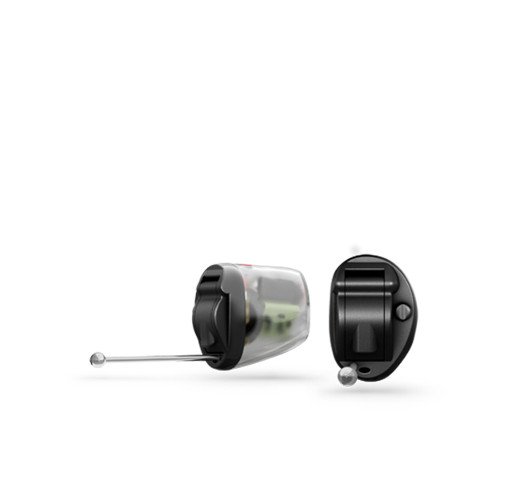Oticon Invisible Hearing Aids
Would you like a hearing device that no one else can see? Oticon has designed their IIC range to be unnoticeable to everyone else, and unnoticeable to you, too. Up until now, the ultra-compact IIC has come at the price of reduced features and limited use cases. Not anymore. Oticon's new IIC instruments with wireless technology make it possible to combine all the benefits of invisible hearing aids, outstanding listening performance with wireless access to communication and entertainment and the optional remote control.
An Invisible Solution
Price Starting From Rs.45,000/- Call For Free Trial Ph-02240161666 (Delhi & Mumbai)

This is Oticon’s most invisible hearing solution. It is shaped to fit so snugly deep inside your ear that no one will see it, or even realise you are wearing it. It means that you can keep your hearing loss a secret, and enjoy the many benefits of modern hearing care, without any noticeable change to your appearance.
Not only is it invisible to everyone else, Oticon IIC is designed to fit seamlessly into your lifestyle, so that nothing gets in the way of your regular daily routines. It blends inconspicuously and completely into your lifestyle, so that you can continue to play an active part in life. The sound level adapts automatically as sounds and places change throughout the day, so you will always have the sound you need to participate on an equal footing with everyone else.
Oticon IIC will also have minimum impact on the rest of your lifestyle – fitted inside your ear, it will not affect your use of headsets or telephones, nor how you wear your glasses, or even how you do your hair. As it is placed deep inside the ear, Oticon IIC captures sound in the same way that your ears were designed to do. Based on Oticon’s premium hearing aid technology, Inium Sense, and available at three technology levels to suit all budgets, it gently preserves and amplifies sounds so that what you hear is always clear – and you will be able to participate confidently in all situations.
First Ever Wireless Invisible Hearing Aid
Up until now, the ultra-compact IIC has come at the price of reduced features and limited use cases. Not anymore. Oticon's new IIC instruments with wireless technology make it possible to combine all the benefits of invisible hearing aids, outstanding listening performance, and wireless connectivity, what more could you want?












